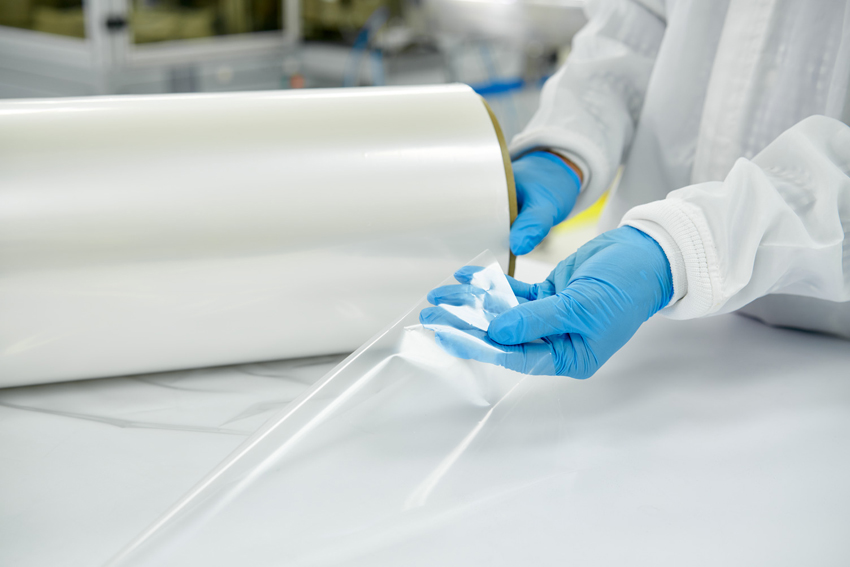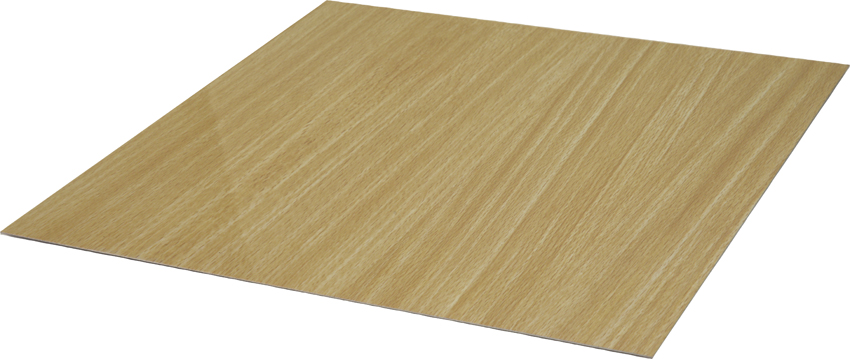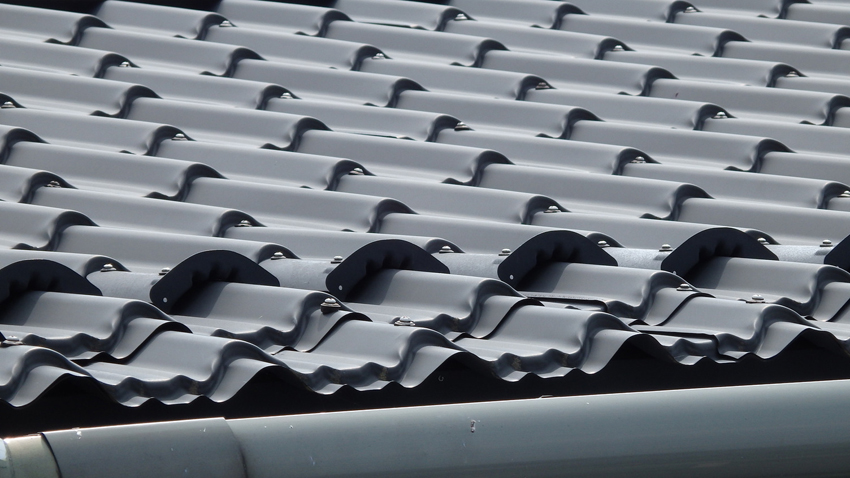Weathering the Storms: How PVF Film Technology Preserves and Elevates Building Exteriors
PVF Film Resistance: A Flexible, Durable Solution
Around the world, we see buildings that stand the test of time—that appear to remain virtually unchanged for decades. What is their secret? One solution that has helped building surfaces withstand these issues is PVF, a technology that works as a laminate on surfaces. While many other protective coatings, including paint, often fade, chalk, crack, blister, or check from UV exposure, acid rain, or dirt, PVF film has shown to prevent UV degradation and the breakdown of building material due to external forces.
It is a film that makes materials more durable, and it also provides aesthetic properties such as colors and textures that can be incorporated into the design of a building.
Even projects within 1,500 feet of the ocean, including direct oceanfront properties, show resistance to degradation from sea water and salt spray when PVF film is used as an exterior laminate. Its imperviousness to harsh chemicals and its pliability can be fabricated to the tightest of radii without cracks, loss of adhesion, or color change.
PVF film is available as transparent film or in a variety of colors and gloss levels. It is typically applied to the surface of other materials to provide added durability, cleanability, and chemical resistance. It is especially powerful as a solution when it is applied to metal substrates. PVF film is naturally transparent and flexible, enabling its use without the addition of co-resins or plasticizers. It is formulated to provide a desired color, gloss, or special functionality using only inert additives that do not sustain microorganisms such as mold, mildew, fungus, and bacteria. When sterilization is required to remove residual microbes, it has very high resistance to degradation by chemicals and disinfectants for even the most rigorous disinfection protocol.
PVF film can be stretched to more than twice its original length without breaking, which is what makes it highly durable, formable, and resistant to damage. It has been used in architectural applications for decades, preserving the appearance and quality of surface materials, including metal facade and architectural fabric. The flexibility of PVF film allows it to be applied as surface protection to many different angles and surfaces found in a building. It can be used to protect wallcovering, around doors and windows, on ceiling or acoustical panels, case goods, and on graphic signage.
Another architectural application for PVF film is associated with metal bending. Bendability is important to create design elements. But bending can create microcracks in certain coating systems. When PVF film was applied to the metal before it was bent, it was able to keep it from cracking, even at a zero T-bend.
The PVF film material resists fading and corrosion from weather and sun exposure, as well as harsh chemicals and pollution. Its high resistance to the growth of mold, mildew, and bacteria aids the cleanability and durability. In addition, PVF film offers exceptional stain and abrasion resistance. They provide a protective barrier against most staining agents and cleaning solvents, including bleach, alcohols, ketones (acetone, MEK), and even strong acids and alkalis. This barrier ensures staining agents can be easily cleaned, leaving an undamaged, good-as-new appearance that can be maintained over a long period of time.

PVF film can be stretched to more than twice its original length without breaking, and its flexibility allows it to be applied as surface protection to many different angles and surfaces found on a building.
Broad Applications: The Film That Goes Everywhere
Long-lasting and resistant to graffiti and pollution, PVF film preserves the appearance of graphics in even the harshest environments, making it the ideal choice for various graphics overlay, outdoor awnings, and advertising signage. Other applications for the film include a wide variety of other industries. The high-performance protective film can be applied to photovoltaic module backsheet in solar panels and for printed circuit boards (PCB).
PVF film applications span a range of industries, including transportation, aerospace, building and construction, graphics and signage, and electronics. In its use in transportation, its easy-to-clean surface and UV resistance are helpful traits on interior and exterior surfaces in vehicles and vessels that are heavily used by people and often exposed to the outdoor environment. PVF film can be applied to automobile interior surfaces and fiberglass-reinforced plastic, and it is used in aluminum board protection for trucks and trailers. It is also an ideal film for covering graphics overlay, advertising signage, and architectural fabric to protect them from pollution or graffiti and preserve their appearance.
PVF film’s use in aerospace applications include interior ceilings and sidewall decorative panels, window shades, stow bins, bathrooms and galleys, moisture barriers, and composite noise panels, among many others. It was even used as a biobarrier for the Phoenix Mars Lander so that bacterial spores that might have attached just before launch would not affect the vehicle’s robotic arm.
The film can be an ideal technology for the construction industry in the form of exteriors because it is lightweight and impervious to harsh chemicals and pollution. PVF film meets several important industry standards. When applied to metal, it exceeds standards in humidity resistance, Florida Weathering Data on Color Change, salt spray test, and pencil hardness. It meets standards in terms of chemical, fire, abrasion, and fade resistance, and it is UL GreenGuard certified for mold and mildew resistance. In terms of building health, it has proven low emissions of dangerous volatile organic compounds (VOCs). Its durability means that it is less likely to need maintenance, which reduces costs for a building owner.

PVF film’s use in aerospace applications includes interior ceilings and sidewall decorative panels, window shades, stow bins, bathrooms and galleys, moisture barriers, and composite noise panels, among many others.
Coverage and Uniform Thickness Impacts During Lamination
There are many ways to cover a substrate for the exterior or buildings. Paint or coatings are one choice used for covering certain materials, of which polyvinylidene flouride (PDVF)-based coatings are commonly used for protection of metal.
The advantages of PVF film begin even in the production process when the film is being laminated onto a substrate. In all instances where a metal substrate is being treated with a protective coating or film, it is vital that three aspects of the process work together in the highest-quality way possible. These aspects are: preparation of the substrate, the quality of the exterior layer material, and the application process.
In most instances, the substrate needs to be thoroughly cleaned, the material used for lamination or coating needs to be of super-high quality, and the application process needs to be done well so that the coated substrate is covered in a uniform manner for both strength and aesthetics.
In the case of applying paint to a substrate, for instance, the substrate would need to be cleaned so that the paint does not clump or pit on the surface. The paint itself should be of high quality so that it does not run and create uneven coverage and thickness. And the application process needs to be done carefully so that the paint is even with a consistent color appearance across the entire substrate. These three aspects must all work together to form a painted substrate of the highest quality—one that looks aesthetically pleasing and will not need to be replaced in a short period of time.
When it comes to laminating a substrate with PVF film, it is easier to get high quality because the benefits desired for a protected substrate are inherent in the film. PV film provides 100 percent coverage because it is a continuous plane that has no holes or means of cracking. It can cover areas that even the highest-quality paint cannot. In fact, high-quality paint, since it does not run, can leave uncovered holes on the substrate, giving it a pimpled complexion.
PVF film also provides all the properties that would be needed to obtain UV resistance and mechanical resistance. This is regardless of the application process and regardless of the preparation of the substrates. The film is customized to have the optimum surface adhesion and also has a uniform thickness and uniform color, which is something the quality control of the film ensures. These aspects are already built into the protective film.
The film also comes in a broad array of colors and other aesthetic qualities. And because it is a film, it is easy to have a direct gauge of the aesthetics of the film before it is applied, which, unlike paint and other coatings, will not depend on the application process. The film also already has corrosion and fungi protection built into it.
Not all films have the characteristics necessary to achieve the best exterior protection. PVF film has UV resistance, fungi and bacteria resistance, and water resistance—meaning that it will not react with water. It features temperature resistance between -94 degrees Fahrenheit to 320 degrees Fahrenheit, and it is chemically inert, meaning it reacts to no solvent. So, if someone writes or paints on it, a solvent can be used to remove the writing or painting, restoring the surface to its original, pristine condition without damaging the surface. PVF is also a compliant polymer, which means it has some amount of elongation to it. If it is applied onto a metal substrate and the design calls for shaping the substrate, it can be bent—even achieving a zero T-bend—without damaging the film.
Design Elements of PVF Film
A lasting facade is important, but if an exterior of a building cannot keep up with aesthetic trends, its preservation is harder to justify. PVF films preserve exteriors but also lean into current color and texture trends, providing flexible styles and conforming to the vision of a building’s architecture. This section will look at color and texture opportunities with PVF film and provide a case study for a PVF film aesthetic success story.

PVF film can be used to create textures that look like leather, wood, stone, metal—stainless steel and chrome—or other designs.
PVF Film Design Possibilities with Color and Texture
PVF film comes in a range of colors with the diversity of household paint. Examples of colors include gray, sandstone, green, blue, cream, bayberry, and sand. PVF film’s color uniformity and fade resistance means that one can match architectural elements and count on long-lasting color, thanks to PVF film’s durability and ability to be cleaned. The fact that fading is not an issue with PVF film means that even if a design element needs to be replaced or added, matching colors is not difficult.
Another design benefit of PVF film is the ability to add texture to color to emulate other materials. During the process of lamination, transfer papers can be used along with the film to create textures that look like leather, wood, stone, metal—stainless steel and chrome—or other design elements. This capability is as desirable for interiors as it is for exteriors, especially when furniture such as kitchen cabinets, panels and flooring, ceiling, window, or door surfaces, and trims might benefit from design details that still require a certain level of durability because of heavy use.
In the paint world, pearlized additives commonly add dimension to a surface and even create a light-bending effect that results in a softer glow in a room. Pigments can be added to PVF film dispersion prior to casting, which can create the same pearlized look in the film when it is laminated to a substrate.

When selecting materials for construction, it is important to consider the surrounding environment and select the best possible material. PVF film protects substrates and roofs, like this railway rooftop in Japan, which has not needed to be replaced for 30 years.









